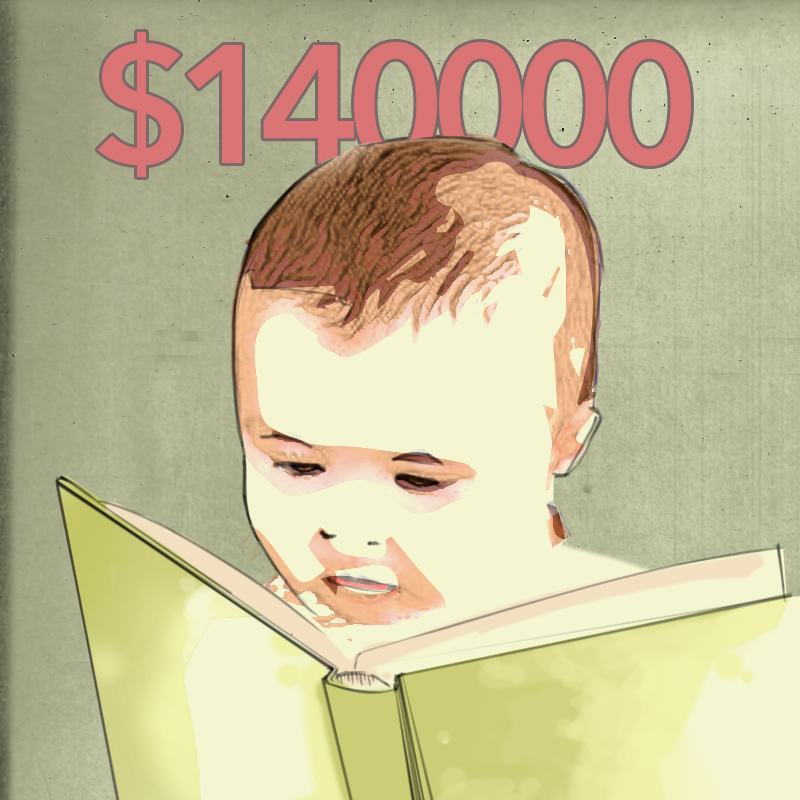
Children born this year are looking at a $140,000 price tag on their university education, according to a recent report from the Bank of Montreal (BMO).
The predicted amount is more than double the current $60,000 estimated cost for an undergraduate degree including living expenses and books, according to the BMO Wealth Institute’s inaugural report on saving for and funding post-secondary education, released March 27.
This report leaves a lot to be desired, said one expert.
The number is a “guesstimate” at best, said Glen Jones, the Ontario Research Chair in Post-secondary Education Policy and Measurement.
“Like anyone trying to look into the future, it is largely speculation based on assumptions about how much tuition and living costs will increase,” Jones said via email.
The BMO report tabulated these numbers with its education savings calculator, which factors in inflation rates, savings growth over time and university costs.
The BMO report suggests the best ways to deal with these rising costs and debts is to invest and use savings options, which are available through the bank.
“They provide surprisingly little information on tax credits and student financial aid,” Jones said, adding that the brochure has little information on the availability of student loans and grants.
Students end up paying 60 per cent of the “ticket price” on tuition, Jones said.
“This will continue to be the case as tuition increases unless the federal government changes its policies,” he said.
Geraldine King, 33, a third-year Canadian studies student at Carleton University, said she doesn’t qualify for OSAP.
As a mature student, King said she also does not qualify for the 30 per cent tuition rebate offered by the Ontario Liberals.
However, King said bursaries and scholarships make all the difference. She is on a full scholarship and many of her remaining costs are covered through awards that she has applied for, she said.
King said she’s also thinking about her son’s education. Her son is 12 years old and she said she hasn’t started saving for him.
“It’s probably a good idea because he’ll be graduating [from high school] in six years,” she said. “[But there are] definitely no savings while I’m in university.”
However, King cannot afford to wait, according to the BMO report.
If King began saving the recommended $3,000 annually, it would cover about half of the current projected costs, or less than a quarter of the projected costs for 2031, according to the BMO report.
“We all want the best for our children,” the BMO report stated.





